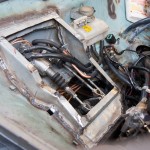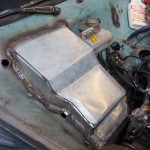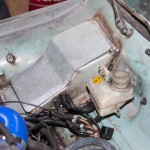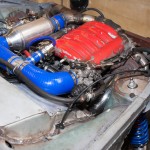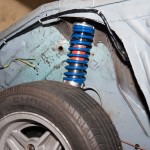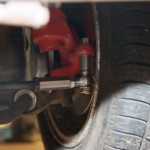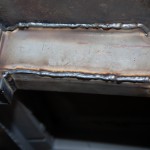The first task tackled this time was to cover the pedals & master cylinders, to both make it water-tight, as well as add some strength back to the bulkhead where a little metal had been removed.
Therefore, a box was made up, with a removable lid to aid access, which covers this area. The clutch pipe was also re-routed inside the car, along with the brake pipes, moving it from its previous route which went down the bulkhead right next to the exhaust.
Next up was to fit a new set of front shocks & springs, which are now fully adjustable for ride height and damping rate.
When lowering the steering rack to allow the engine to fit in place, the steering geometry was modified from standard, by lowering the rack, “bump steer” was introduced – this is where the wheel as it moves up/down, also rotates as though it is being steered.
In order to overcome the bump steer that was introduced by the need to move the steering rack, it was necessary to move the mounting of the track rod end downwards, to match the downwards move of the steering rack.
This is accomplished by use of a long high tensile suspension bolt, suitable spacers, a rose joint and a length of hexagonal bar, with the correct threads tapped.
Moving underneath the car, the remaining chassis outrigger/jacking point was replaced – not with capabilities for the standard jack, but instead utilising some box section, which will give a perfect location for a more commonly available scissor jack, like is found with more modern cars.
Additionally, the rear end of the driver’s side sills were finished, which mostly concludes the remaining structural welding that was required underneath.

